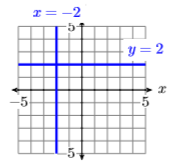3.6: Standard Form of a Line
( \newcommand{\kernel}{\mathrm{null}\,}\)
In this section we will investigate the standard form of a line. Let’s begin with a simple example.
Example
Solve the equation
Solution
First we solve the equation
Note
Just as multiplication is distributive with respect to addition
When dividing a sum or a difference by a number, we use the distributive property and divide both terms by that number.
Finally, use the commutative property to switch the order of the terms on the right-hand side of the last result.
Because the equation
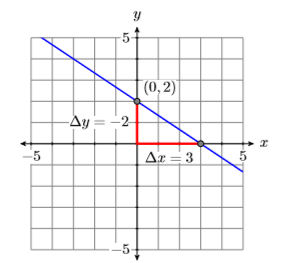
Exercise
Add exercises text here.
- Answer
-
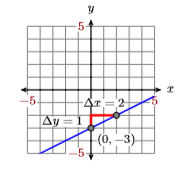
In general, unless
Note that the last result is in slope-intercept form
FAct
The graph of the equation
Important points: A couple of important comments are in order.
- The form
- The form
- If
Standard form
The form
Slope-Intercept to Standard Form
We’ve already transformed a couple of equations in standard form into slopeintercept form. Let’s reverse the process and place an equation in slope intercept form into standard form.
Example
Given the graph of the line in Figure
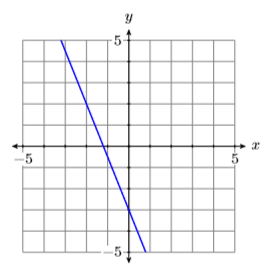
Solution
The line intercepts the
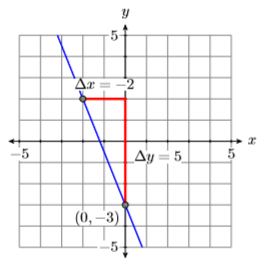
To put this result in standard form
That clears the fractions. To put this last result in the form
Thus, the standard form of the line is
Exercise
Given the graph of the line below, find the equation of the line in standard form.
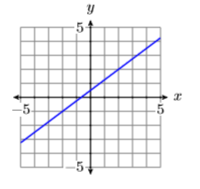
- Answer
-
Point-Slope to Standard Form
Let’s do an example where we have to put the point-slope form of a line in standard form.
Example
Sketch the line passing through the points
Solution
Plot the points (−3,−4) and (1,2), then draw a line through them (see Figure
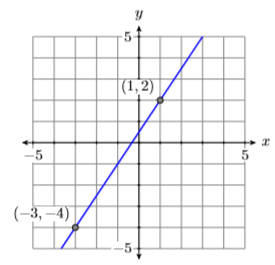
Use the points
Let’s substitute
The question requests that our final answer be presented in standard form. First we clear the fractions.
Now that we’ve cleared the fractions, we must order the terms in the form
To put this in the form
It appears that
Thus, the equation of the line in standard form is
Note
If we fail to reduce the slope to lowest terms, then the equation of the line would be:
Multiplying both sides by
This doesn’t look like the same answer, but if we divide both sides by
This shows the importance of requiring
Exercise
Find the standard form of the equation of the line that passes through the points
- Answer
-
Intercepts
We’ve studied the
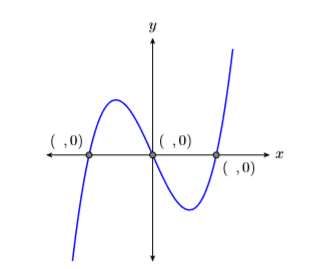
In Figure
-
To find the
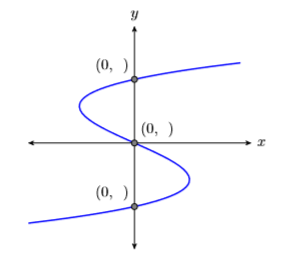
Similarly, the graph in Figure
-
To find the
Let’s put these rules for finding intercepts to work.
Example
Find the
Solution
We know that the graph of
To find the
Thus, the
To find the
Thus, the
Plot the

Exercise
Find the
- Answer
-
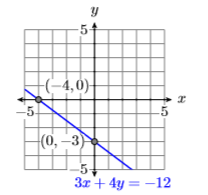
Example
Sketch the line
Solution
Let’s first find the
To find the
Thus, the
To find the
Thus, the
Plot the intercepts and draw a line through them. Note that it is clear from the graph that the slope of the line
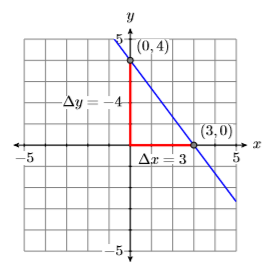
You could also solve for
Because the slope of
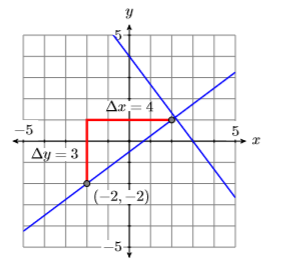
Finally, use the point-slope form,
Let’s place our answer in standard form. Clear the fractions.
Rearrange the terms to put them in the order
Hence, the equation of the perpendicular line is
Exercise
Find the equation of the line that passes through the point
- Answer
-
Horizontal and Vertical Lines
Here we keep an earlier promise to address what happens to the standard form
As we will see in the next example, the form
Example
Sketch the graphs of
Solution
To sketch the graph of
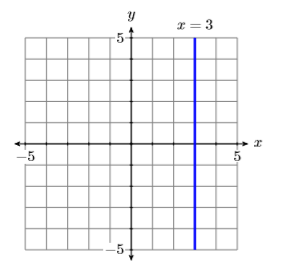
Secondly, to sketch the graph of
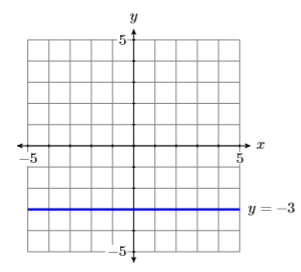
Things to note:
A couple of comments are in order regarding the lines in Figures
- The graph of
- However, the graph of
However, it is far easier to just look at the line in Figures
Exercise
Sketch the graphs of
- Answer
-
